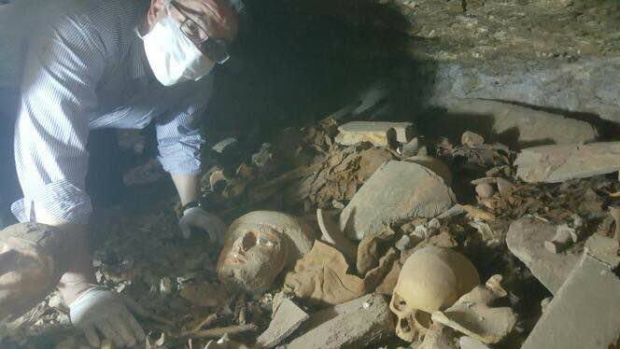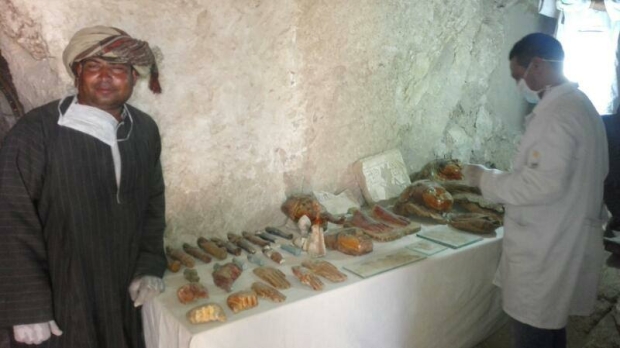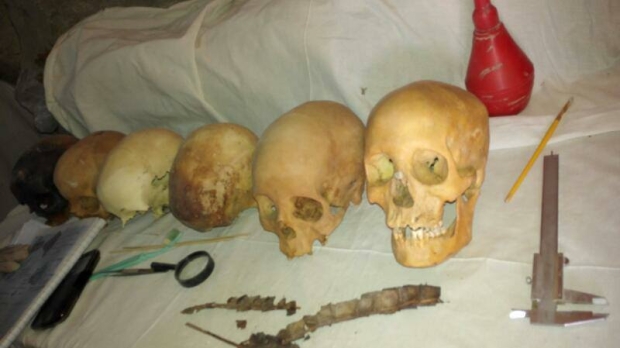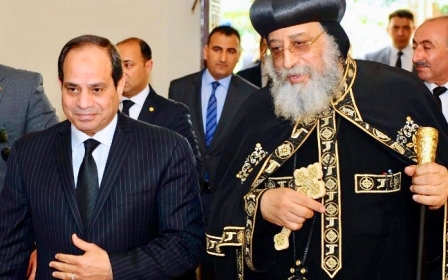Mummies discovered in ancient tomb near Egypt's Luxor
Egyptian archaeologists have unearthed several mummies, colourful wooden sarcophagi and more than 1,000 funerary statues in a 3,500-year-old tomb near the city of Luxor hailed as an "important discovery".
Antiquities officials had initially said six mummies along with partial remains were discovered near the southern city, but said they had later identified two more mummies.
"There are 10 coffins and eight mummies. The excavation is ongoing," Mostafa Waziri, the head of the archaeological mission, told AFP.
The 18th dynasty tomb, discovered in the Draa Abul Nagaa necropolis near the famed Valley of the Kings, belonged to a nobleman named Userhat who worked as the city judge, the ministry said in a Tuesday statement.
It was opened to add more mummies during the 21st dynasty, about 3,000 years ago, to protect them during a period when tomb-robbing was common, said Waziri, the head of the archaeological mission, at the site.
"It was a surprise how much was being displayed inside" the tomb, Antiquities Minister Khaled el-Enany told reporters outside the tomb.
"We found a large number of ushabti (small carved figurines), more than 1,000 of them," Enany said.
"This is an important discovery," he said.
Ushabti figurines were often placed with the deceased in ancient Egyptian tombs to help with responsibilities in the afterlife.
Inside the tomb, archaeologists wearing white masks and latex gloves inspected the sarcophagi, which were covered with intricate drawings in red, blue, black, green, and yellow, and featured the carved faces of the dead.
The coffins were mainly well-preserved, though some had deteriorated and broken over the years.
Archaeologists were also examining a mummy wrapped in linen which was inside one of the coffins.
White, orange, green, and patterned pots were also found in the tombs.
"It is a T-shaped tomb (which) consists of an open court leading into a rectangular hall, a corridor and an inner chamber," the ministry said in a statement.
A nine-metre shaft inside the tomb held the ushabti figurines, as well as "wooden masks and a handle of a sarcophagus lid", the ministry said.
Another room in the tomb was also discovered, though it has not yet been completely excavated, it said.
Nevine el-Aref, the spokeswoman for the antiquities ministry, said "there is evidence and traces that new mummies could be discovered in the future".
New MEE newsletter: Jerusalem Dispatch
Sign up to get the latest insights and analysis on Israel-Palestine, alongside Turkey Unpacked and other MEE newsletters
Middle East Eye delivers independent and unrivalled coverage and analysis of the Middle East, North Africa and beyond. To learn more about republishing this content and the associated fees, please fill out this form. More about MEE can be found here.







